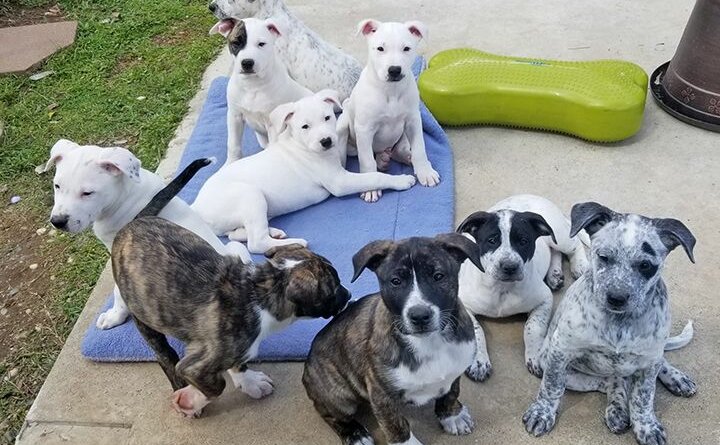Read this if you and your dog visit wetlands
As I write this, I am visualizing strength and a return to health for Buster, a dog who just turned three years old, and whom I met for the first time when he was about five weeks old. He was one of a litter of nine puppies that my friend Leonora and I co-fostered for our local shelter at the very outset of the COVID pandemic in early 2020. Getting all the pups adoptive homes was made more complicated by the fact that the shelter, like most others, closed its doors to the public at that time, and instead, required that potential adopters make appointments to come and meet specific puppies that they were interested in. (Normally, when the shelter has a litter of puppies for adoption, people can take the whole bunch into the “get acquainted” room at the shelter to try to decide which one they have an affinity for – or which one likes them best!) This slowed the adoptions – which meant that Leonora and I had puppies staying with us for longer than usual – which meant that we couldn’t help but get more and more attached to the puppies who took the longest to get adopted.
Leonora fell particularly hard for Buster. When we met the couple who ultimately adopted him, we were happy that he had found such a good home, even though Leonora was sad to see him go; she had been this close to keeping him herself. He was a particularly sweet, funny, and confident pup with adorable markings on his face. We later discovered that his new owners enrolled him in puppy kindergarten classes (and later, doggie daycare) at The Canine Connection, the premium boarding, daycare, and training facility in our area. Hurray! We’d see his photo pop up in The Canine Connection’s photo albums from time to time; it was always a thrill to see how big and handsome he had become.
When Buster was about 18 months old, I ended up meeting his owners as they were having dinner in a restaurant in town where my sister was a cook. Not long after that, we got together with all of our dogs and I showed them a couple of my favorite trails in the Oroville Wildlife Area where I walk with my dogs. We became friends on Facebook and “liked” each other’s dog photos.
A local danger?
About two weeks ago, I aw a heart-stopping post on Facebook by one of Buster’s owners. Megan wrote, “It has been one helluva week and one that I don’t want to ever repeat.” She went on to say that Buster had vomited a number of times at daycare. She took him to the vet the next day and the vet felt some masses in his abdomen. He ended up undergoing emergency surgery to remove the suspected blockage, but things went from bad to worse.
The vet found a tumor, but also lots of bowel in very bad shape, including some perforations. The vet removed some of the bowel, but did not remove the tumor, which had grown all around the bowel; she had suspicions about the tumor that proved correct: it was loaded with an organism called Pythium insidiosum. This is an oomycete (pronounced oh-uh-MY-seat) – an organism that looks and acts like a fungus but is more closely related to algae. It’s found in stagnant water, and can cause the growth of tumors if ingested. The problem is, unless every bit of the tumor and the oomycetes is removed, the organism can quickly recur. The vet did her best to patch Buster back together again, and started him on a course of strong anti-fungal drugs that stand the best chance of knocking the P. insidiosum back.

As I write this, things are not looking promising for Buster. His owners and veterinarian are trying desperately to get him into the veterinary clinic at the University of California, Davis, vet school, hoping that they could perform the complicated surgery to remove the Pythium-infested tumor – and hoping the anti-fungal drugs can knock out the Pythium. But it’s a long shot; “pythiosis” (as an infection with this organism is called) has a notoriously poor survival rate in dogs when it’s as advanced as Buster’s case is.
I was (and am) aghast at Buster’s diagnosis. I had never heard of pythiosis before – and when I looked it up, everything I read said it was most common in the states that border the Gulf of Mexico, where it is known colloquially as “swamp cancer.” But the more I researched the topic, the more reports I found of cases in dogs within an hour’s drive of where I live – and Buster’s vet is one of my vets! She suspected pythiosis before a biopsy came back because she recognized the appearance of his intestinal tumor; she had previously seen a case like his a few years ago.
If Buster was exposed to this organism locally – well, shoot, his owners take him to some of the same places where I take my dogs for walks at least once a week. Is this horrible organism in our local wetlands now?
I asked Jennifer Bailey, one of our veterinary contributors, to write an article about pythiosis for WDJ; she had never heard of pythiosis before, either, but she knocked out an article in record time and we posted it immediately. There is some speculation that this organism is expanding its range due to climate change, but since the treatment for this infection is most successful the faster it is recognized and treated, I wanted to spread the word about it as quickly as possible. And while none of my dogs has any sign of an infection, I’m going to look into getting titer tests for the two younger dogs, who have been walking in the same wetlands as Buster.
If you take your dog anywhere that there is stagnant water – near wetlands, ponds, or swamps – please read Dr. Bailey’s article on pythiosis, so you can recognize any early signs of an infection. It’s a particular concern in duck dogs whose owners hunt in flooded rice fields. There may be something in the agricultural practices of rice-growing that is favorable to the organism’s growth; a form that attacks the skin, causing non-healing sores, affects many humans who work in rice fields in places with a tropical, subtropical, or temperate climate such as Thailand and Malyasia.




